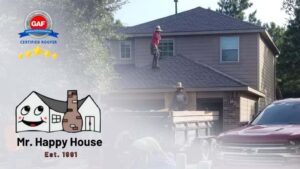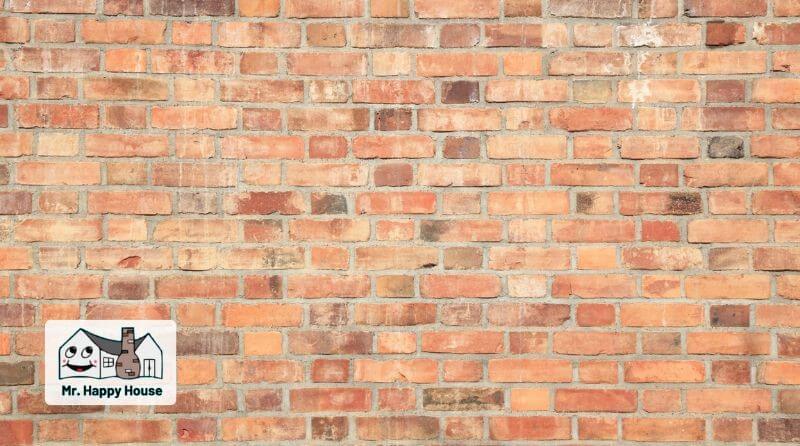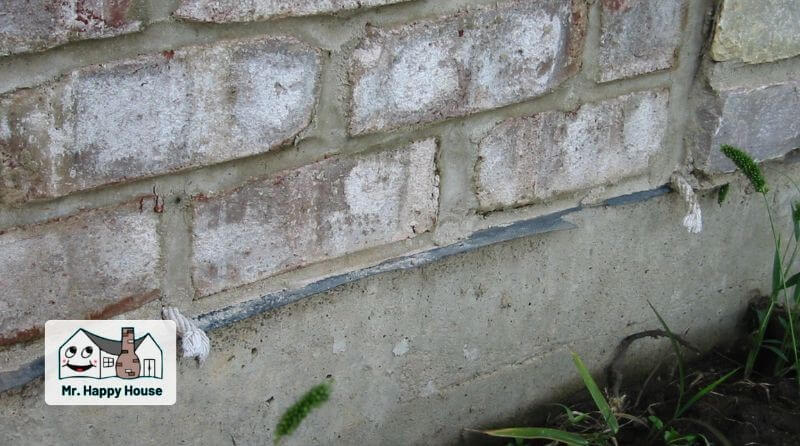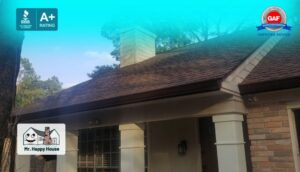
Best GAF Certified Roofers in The Woodlands, TX – Quality Roof Replacement, Gutters & Siding
Best GAF Certified Roofers in The Woodlands, TX – Quality Roof Replacement, Gutters & Siding Best GAF Certified Roofers in The Woodlands, TX – Quality

While the idea of replacing your existing siding with the timeless appeal of brick may initially seem enticing, it’s crucial to approach such a project with caution and careful consideration. Transitioning from traditional siding to brick cladding is not a decision to be taken lightly, particularly when dealing with an existing home. In this article, we will explore the various challenges and drawbacks associated with this conversion.
While brick siding has its merits, the consensus is clear: for most existing homes with regular siding, the endeavor may not be advisable. Before you embark on such a transformation, it’s essential to be well-informed about the potential pitfalls and consequences of this choice.
Brick siding is a timeless charm and can enhance the curb appeal of any home. However, when it comes to replacing conventional siding with brick, a slew of challenges and potential disadvantages will make you think twice about replacing siding with brick on your home.
One of the primary reasons why this transition from regular siding to brick is not advisable for existing homes with regular siding is the substantial difference in installation and structural requirements.

Brick cladding requires a solid masonry foundation, also known as a brick ledge, and installing it on an existing home may necessitate significant structural alterations. This can lead to a host of issues, including increased costs and the potential for complications that could arise during the process.
Furthermore, brick siding is considerably heavier than most traditional siding materials, such as vinyl or wood. This extra weight can place undue stress on your home’s foundation and structural components. In some cases, it might even require reinforcement of the existing structure, which can be a costly and time-consuming endeavor.
In summary, the desire to replace siding with brick must be tempered with a realistic assessment of the structural, cost, and insulation challenges involved. It’s essential to weigh these potential drawbacks against the aesthetic benefits and carefully evaluate whether the transition from lap siding to brick is worth it.
Transitioning from traditional siding to brick siding is a complex endeavor laden with challenges. It’s important to fully grasp the difficulties you may encounter when attempting this conversion.
One of the first and most significant challenges is the need for structural modifications. Brick is much heavier than typical siding materials, such as vinyl or wood. Installing it on an existing home often demands alterations to the structure’s foundation such as adding a brick ledge. Reinforcing walls to bear the additional weight is a labor-intensive process, often requiring professional intervention and substantial investment.
Brick has excellent thermal properties, but older homes may not be well-equipped in this regard. Upgrading insulation to meet contemporary energy efficiency standards can be expensive and might necessitate substantial changes to the interior of the house. This not only increases costs but also disrupts the living space during the renovation.
The financial implications of transitioning from siding to brick can be a significant deterrent. The costs associated with structural modifications, insulation upgrades, and the brick materials themselves can quickly add up. It’s crucial to prepare a comprehensive budget that accounts for these expenses and to ensure you have the financial resources necessary to complete the project.
Converting your home’s siding to brick is not a swift process. The construction timeline can be extended due to structural work, weather conditions, and the intricacies of brick installation.
In summary, understanding the inherent challenges of switching from siding to brick is essential. The need for structural modifications, insulation considerations, cost implications, and the time and disruption associated with the project all contribute to why this conversion may not be advisable for many existing homes with regular siding.
As we advance deeper into the consideration of replacing lap siding with brick, it’s important to understand the potential disadvantages associated with this conversion. These disadvantages can significantly impact the functionality, aesthetics, and overall value of your home.
Brick siding, while durable and long-lasting, is not maintenance-free. Over time, it can accumulate dirt, grime, and even moss or mildew. Cleaning brick may require pressure washing every 2 years for the best curb appeal, whereas James Hardie Siding will not require constant pressure washing.
Brick offers a classic and timeless look, but it doesn’t provide the same design flexibility as other siding options. The color and style of brick are often challenging to change once installed. This limitation can hinder your ability to update the exterior appearance of your home to suit changing preferences or trends.
Brick can be susceptible to weathering and fading over time. Exposure to the elements, particularly in regions with harsh weather conditions, can cause the brick to deteriorate and lose its original luster. This can result in a worn or weathered appearance that may require costly repairs or restorations.
If damage occurs to a section of brick siding, repairs can be challenging and costly. Finding matching bricks for replacement can be a cumbersome task, and the repair process itself can be labor-intensive. Traditional siding materials, on the other hand, are often easier and more cost-effective to repair.
Once you make the transition to brick siding, it is a largely permanent decision. Reverting back to traditional siding materials can be an expensive and complex process. If you’re unsure about the long-term commitment to brick, this inflexibility should be carefully considered.
In conclusion, these potential disadvantages underscore why replacing siding with brick may not be advisable for existing homes with regular siding. While brick has its merits, the limitations and drawbacks of replacing siding with brick should be carefully weighed against the benefits before making such a significant change to your home’s exterior.
The financial aspect of replacing conventional siding with brick is a critical factor that cannot be overlooked. This section delves into the various cost considerations and investment implications associated with such a conversion.
The upfront expenses of transitioning to brick siding can be substantial. Brick is generally more expensive than many traditional siding materials. The cost varies depending on the type of brick chosen, its quality, and the size of the project. Additionally, the labor and materials required for structural modifications, insulation, and installation add to the overall initial cost.
As previously mentioned, converting to brick often necessitates structural alterations to accommodate the additional weight and rigidity of the brick. These modifications can significantly increase the overall project cost.
It’s important to consider the potential return on investment (ROI). While brick siding can enhance a home’s curb appeal and value, the initial and ongoing costs should be weighed against the expected increase in property value. In some cases, the ROI may not justify the investment.
In summary, the cost and investment considerations associated with replacing siding with brick are substantial. It’s vital to carefully assess your budget, long-term financial capabilities, and the potential ROI before committing to such a conversion, especially for existing homes with regular siding.
When considering whether to replace your existing siding with brick, it’s essential to explore alternative siding solutions that may better suit your needs and preferences. These alternatives often offer more practical and cost-effective options for homeowners with regular siding.
James Hardie Fiber cement siding is a durable and aesthetically pleasing siding option. It can mimic the appearance of traditional wood siding while offering the benefits of low maintenance and resistance to rot and pests. James Hardie Siding is proven to withstand the test of time and has a Class A fire rating, which is one of the best ratings for fire resistance.
When contemplating a transition from conventional siding to brick, it’s vital to consider the impact such a change may have on the original siding of your home. Preserving the integrity of the existing siding is a crucial aspect of this decision-making process.
The original siding of your home may have been chosen to complement the architectural style and design. Replacing it with brick can disrupt the aesthetic harmony that was initially intended. Homeowners should carefully assess whether the transition aligns with the original architectural intent.
For older homes or those with historical significance, the original siding might be a fundamental part of the property’s heritage. Changing it to brick could diminish the historical value of the home and potentially lead to regulatory issues if the property falls under historical preservation regulations.
Consider the current condition of your existing siding. If it’s in good shape and only requires minimal repairs or maintenance, replacing it with brick may be an unnecessary and costly endeavor. Keeping the original siding well-maintained can be a more prudent choice.
If you plan to sell your home in the future, it’s essential to consider how the transition to brick siding may impact the resale value. Some potential buyers might prefer the original siding or be deterred by the prospect of maintaining brick.
It’s crucial to be aware of local building codes and zoning regulations. Replacing original siding with brick might not align with these rules or require specific permits and approvals, adding complexity and costs to the project.
In conclusion, preserving the integrity of the original siding of your home is a critical consideration when evaluating the transition to brick. It involves maintaining the aesthetic, historical, and structural aspects of the property and ensuring compliance with relevant regulations and zoning requirements. These factors should play a significant role in your decision-making process.
Transitioning from conventional siding to brick cladding involves significant design and compatibility considerations. These factors can greatly influence the success of the project and how well the new brick siding integrates with your home’s overall aesthetic.
The architectural style of your home should be carefully considered. Some architectural styles may be more conducive to brick siding, while others may not easily adapt to the change. Ensuring that the brick aligns with the overall architectural harmony of your home is crucial to avoid visual discord.
Brick comes in various colors and textures. Selecting the right brick that complements your home’s design and blends with the surroundings is essential. The wrong choice can result in an incongruous appearance and impact the curb appeal.
The design of your windows and doors should also be taken into account. Ensuring that they coordinate well with the brick siding is important for achieving a harmonious and visually appealing look.
Consider the landscaping and the immediate surroundings of your home. How will the new brick siding fit within the context of your property? It’s vital to think about the overall environment to create a cohesive appearance.
Think about the long-term aesthetics. While brick siding may be appealing initially, will it maintain its visual appeal over time? Factors like weathering, fading, and the permanence of the decision should all be considered.
In summary, design and compatibility issues play a significant role in whether or not replacing siding with brick is a wise decision for your home. These considerations are essential for achieving an attractive and integrated appearance that enhances, rather than detracts from, your property’s overall look.
Before proceeding with a conversion from regular siding to brick, homeowners must be aware of and address any regulatory and zoning concerns that may arise during the project. Failure to do so can result in legal complications, delays, and unexpected costs.
In many locations, changing the siding on your home requires building permits and HOA approval. These permits and approvals ensure that your project complies with local building codes and regulations. Failing to obtain the necessary permits can lead to legal consequences and may require you to undo the changes made.
If your home is in a historically significant area, it may be subject to preservation regulations that dictate what changes can be made to the exterior. Replacing the original siding with brick could be in violation of these regulations leading to unnecessary fines and legal trouble.
Zoning requirements may dictate the type of materials that can be used for exterior renovations. Your proposed transition to brick might not align with these requirements, leading to complications and the need for special approvals.
If you live in a community governed by a homeowners’ association (HOA), they may have specific rules and guidelines concerning exterior changes. It’s important to consult your HOA’s regulations before proceeding with the transition to brick siding.
In some regions, there may be environmental regulations to consider when making changes to your home’s exterior. This can include rules related to the disposal of old siding materials or the environmental impact of the new materials used.
To avoid potential legal issues and costly delays, it’s crucial to research and adhere to all relevant regulatory and zoning concerns before replacing regular siding with brick. Consulting with local authorities, historical preservation boards, and homeowners’ associations can help you navigate the complex regulatory landscape.
In conclusion, the decision to replace regular siding with brick is a complex one, fraught with challenges such as structural modifications, significant costs, design limitations, and regulatory hurdles. While brick siding can enhance your home’s curb appeal and longevity, its drawbacks and the impact on the original siding’s integrity make it a less advisable choice for many existing homes.
It’s vital to thoroughly consider the financial, aesthetic, and regulatory aspects of the project, as well as explore alternative siding solutions that may better suit your needs and budget. Ultimately, making an informed decision involves a thorough understanding of the potential consequences and a clear assessment of the impact on your property’s overall integrity and value.
We hoped you loved this article on if can you replace siding with brick, please share and tune in for more roofing, siding, and house painting content!
Our Services:













Best GAF Certified Roofers in The Woodlands, TX – Quality Roof Replacement, Gutters & Siding
Best GAF Certified Roofers in The Woodlands, TX – Quality Roof Replacement, Gutters & Siding Best GAF Certified Roofers in The Woodlands, TX – Quality

Are Gutters Part of the Roofing System?
Are Gutters Part of the Roofing System? Are Gutters Part of the Roofing System? When it comes to home maintenance, gutters often seem like a

Why James Hardie is The Best Option for Home Siding
Why James Hardie is The Best Option for Home Siding Why James Hardie is The Best Option for Home Siding James Hardie stands out whether











